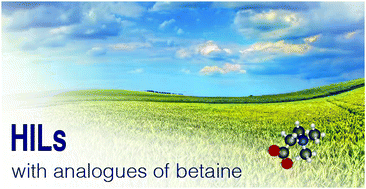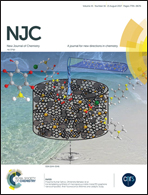Biodegradable herbicidal ionic liquids based on synthetic auxins and analogues of betaine†
Abstract
In this manuscript we present the synthesis and characterization of herbicidal ionic liquids (HILs) based on betaine derivatives (N-dodecylbetaine or N-(3-cocoamidopropyl)betaine) playing the role of the cation and four firmly established synthetic auxin herbicides (2,4-D, MCPA, MCPP or dicamba) applied as the anions. The syntheses were conducted in two steps: protonation of alkylbetaines with hydrochloric acid followed by the ion exchange reaction between the formed intermediates and potassium salts of herbicides. All the synthesized salts were classified as ionic liquids (ILs) owing to their melting points below 100 °C. The products exhibited high thermal stability with decomposition temperatures (Tonset) varying from 240 to 273 °C. The herbicidal efficacy experiments performed under greenhouse and field conditions confirmed their biological activity. The enhancement of their herbicidal activity results from the potent surface-active properties generated by alkylbetaine cations. The spray solutions of the investigated HILs display low contact angle (approx. 50–62°) and surface tension (approx. 30–33 mN m−1) contributing to the increase of the contact surface between the leaves and the active ingredient and thereby the increase of the absorption of the herbicide into the plant. The highest susceptibility to biodegradation was proven for salts containing phenoxyacetate (2,4-D and MCPA) anions.



 Please wait while we load your content...
Please wait while we load your content...